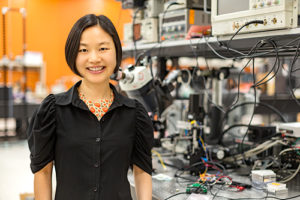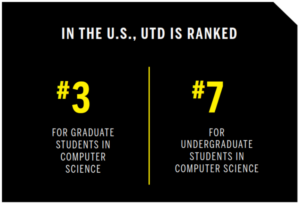Michael Wood, Director, Education & Workforce
While the COVID-19 pandemic is anything but over, its adverse impact on the Texas economy was relatively short-lived, said Texas Workforce Commission (TWC) Chairman Bryan Daniel during the Dallas Regional Chamber’s second annual State of the Workforce event.
The economic downturn spurred by the coronavirus lasted for just sixty days, Daniel said. Since hitting rock bottom in May 2020, the Texas economy has been on a steady path to recovery.
“It’s really not a recession, it’s a disaster,” Daniel said. “I can show you Hurricane Harvey numbers that will mimic the pandemic numbers a lot better than any kind of recessionary numbers that we saw in (the 2009 to 2011) timeframe.”
Now the Texas workforce has almost completely rebounded, too.
After recording historic employment figures in February 2020, the state saw sixty times the number of unemployment claims during that March and April than during the entirety of 2019. Fast forward to today, and Texas is just 125,000 workers (out of more than 13 million) shy of that all-time employment record. And the state has recorded economic growth in 16 of the last 17 months.
However, these figures don’t mean that the economy has returned to its pre-pandemic state. Rather, they underscore the need for continued innovation to keep the economy moving forward.
“This ‘new normal?’ There is nothing normal about (it),” Daniel said. “What we will have, though, are new terms, new tools, and new tactics.”
Daniel emphasized that these terms, tools, and tactics must meet the Texas economy where it currently is and needs to go, and not where it was prior to the pandemic. Example tactics include addressing Texas’ persistent middle-skills gap and ensuring upward career mobility for every worker in the state.
Additionally, the tools must match the tactics. State-sponsored virtual education programs for workers seeking a career change or short-term workforce training courses at local community colleges are two tools designed to meet the needs of the current economy.
Not every tactic will, nor should, be an immediate solution, Daniel said. Many, in fact, will require a long runway and greater coordination from the three state agencies that oversee the development of Texas’ talent pipeline: the Texas Education Agency (TEA), the Texas Higher Education Coordinating Board (THECB), and TWC.
“We have to translate all the way down through school,” said Daniel. “This is a next week project and this is a (next) 20 years project, all at the same time.”
In the Dallas Region, employers and education institutions have adopted new tools and tactics amid the pandemic to address pressing workforce needs – a topic discussed by an expert panel following Commissioner Daniel’s remarks.
For example, Dallas College, Dallas County’s community college system, has leveraged local labor market data and state and federal funding to develop credentialing programs and short-term workforce training pathways aligned with regional economic needs. These initiatives, which are available for traditional students as well as incumbent or displaced workers, are designed to quickly place individuals in high-demand career pathways.
“We have developed new pathways to employment for students, (such as) training programs in logistics and supply chain, cloud support administration, and telehealth,” said Pyeper Wilkins, Vice Chancellor of Workforce and Advancement for Dallas College. “We are using (stimulus) dollars to look forward and really dig into what the labor market says we need to be training people to do now.”
Employers, too, have invested in their talent, standing up their own educational opportunities for current staff to develop new skills or hone existing ones.
On-Target Supplies and Logistics, a Dallas-based logistics management firm, launched an online learning platform to provide workers training opportunities in technology, finance, and operations during the crisis.
“The days of just moving boxes are over,” said Tre’ Black, On-Target’s CEO. “We needed to make sure our workforce not only understood technology but had greater financial awareness and operational awareness so they could help bring better efficiencies to the supply chain. So we had to do a lot of training.”
Workforce development has only been one piece of the puzzle, however, for employers throughout the pandemic. Holding onto incumbent workers amid the so-called “Great Resignation” has been a central concern.
To this end, Bank of America made significant investments in employee benefits, in addition to an assurance that no employee would be laid off as a result of the coronavirus. Improvements included bolstered dependent care benefits, mental health supports, and a $21 minimum wage, along with a commitment to increasing that minimum to $25 by 2025.
“We don’t take (retention) for granted,” said Jennifer Chandler, Dallas Market President for Bank of America. “(Our investment in employee benefits) is a statement, saying that when you come to Bank of America, you have an opportunity for a career.”
The State of the Workforce was presented by BGSF and Texas Mutual Insurance. Amazon and Bank of America were Gold Sponsors, and Oncor was a Silver Sponsor

















